Day 931-933 - A visit with the Himba
In the north western corner of Namibia live the himba people, an ethnic group that to this day has succeded in holding on to their traditional lifestyle to the greatest possible extent. Since we came to Africa we have learnt that their descent is of great importance to the people, be it in a social context, finding a potential spouse or who to do business with. Different ethnic groups are attributed certain characteristics and clansmen and women take pride in them and their sense of belonging.
However, it has become rare that the outer appearance gives away the tribal belonging of a person. Not so with the Himba. At our first destination Opuwo, the only small town in the region we witnesses two completely different worlds meet and mingle. The street scene is marked by a mixture of topless men and women in traditional loin clothes and those in the kind of garments we’re more accustomed to. It can be assumed that they too belong to the Himba tribe as this area used to be a designated „Homeland“ when Namibia was still under the rule of the Apartheid regime of South Africa (until 1990).
The picture in the villages however is a very different one. Western apparel is widely rejected. Only some of the men have swapped their calfskin loin cloth for trousers or pieces of fabric that they wrap around their hips like skirts. Whereas he women uniformly and with little variance wear traditional dress.
After about an hour of heading north from Opuwo we saw a small sign on the side of the road that indicated a camp ground. We decided to stop and have a look as it was a possible option for the night. The camp was simple but nice and shady and the owner John was very friendly. We talked for quite a while and told him that we would like to visit a Himba village. John was in the process of building a museum village that was about to open in a few days. These „Living Mueseum“ where visitor can learn about a certain culture and their way of life seem to be very popular in Namibia. We agreed to visit the „Living Museum“ in the evening and were able to witness some traditional singing and dancing. But first we wanted to visit a „real“ village. After thinking about it for a while John came up with the idea that we could ride to a nearby settlement where his uncle was the chief. Because there were only few people who spoke English and hence communication would be a bit tricky, John wrote a letter to his uncle explaining our motives. With the letter in hand and some extremely detailed directions we rode off and hadn’t any problems finding the place.
We slowly approached the accumulation of about 20 wood and clay huts that were enclosed by a wooden fence and sparse vegetation. We weren’t sure what kind of encounter this would going to be. As it happens so often it were the childeren who broke the ice. We had just pulled under a shady tree and hadn’t even gotten off the bikes yet when a gang of at least 25 kids between 1 and 6 years old came storming from the village towards us. They seemed to be very delighted to have visitors and they just loved the bikes. After this nice welcome we asked some men who were relaxing in the shade of a tree for the chief. One of them spoke English and kindly offered to help us with the translation. We chatted with the chief for a while and were then shown around the village. The friendly translator explained a few things about the homestead and then left us to wander around as we pleased. The attention we received was mixed. The kids never got tired of following us around, sitting on our laps and climbing around on our bikes. Some of the adults just ignored us, some of them looked at us a bit skeptically but the great majority received us in a very friendly manner, invited us into their houses and tried their best to communicate through gestures.
We were told that a few days prior there had been a fueneral of an important member of the community and many relatives and friends had come for the occasion. That explained why there were so many people and plenty of tents around.
Joey
Tag 931-933 - Ein Besuch bei den Himba
Im nordwestlichen Zipfel Namibias leben die Himba, eine Ethnie die auch heute noch weitestgehend seine traditionellen Lebensweisen verfolgt. Uns ist bereits klar geworden, dass in Afrika die Stammeszugehörigkeit eine wichtige Rolle spielt, sei es im sozialen Kontext, bei potenziellen Ehepartnern oder mit wem man Business macht. Verschiedenen ethnischen Gruppen werden verschiedene Attribute zugewiesen und man ist stolz auf seine Abstammung. Äußere Merkmale der Zugehörigkeit sind jedoch nicht mehr weit verbreitet. Anders bei den Himba. In Opuwo, dem einzigen Städtchen in der Gegend und unserem ersten Anlaufpunkt, knallen die Gegensätze aufeinander. Das Strassenbild ist geprägt von einer Mischung aus traditionell in Lendenschurz gekleideten Männern und Frauen mit freien Oberkörpern und solchen in für uns eher gewöhnlicher Tracht. Man kann davon ausgehen, dass auch sie Himba sind, denn die Region war eine den Himba zugewiesenes „Homeland“ als Namibia noch dem Apartheid Regime Südafrikas unterstand (bis 1990).
Auf den Dörfern ist das Bild jedoch ein ganz anderes. Westliche Kleidung wird weitestgehend abgelehnt. Nur die Männer haben ihre Kalbsleder-Lendenschurze teilweise durch Hosen oder Stoffumhänge ersetzt. Die Frauen hingegen tragen einen einheitlichen traditionellen Look, der sich nur in Details unterscheidet.
Nachdem wir etwa eine Stunde von Opuwo aus Richung Norden gefahren waren sahen wir ein kleines Schild am Strassenrand das auf einen Campingplatz hinwies. Wir entschieden uns den mal anzuschauen als Option für die Übernachtung. Der Platz war zwar einfach, aber schattig und sehr schön gelegen und der junge Besitzer John sehr nett. Wir kamen ins Gespräch und erzählten ihm, dass wir gerne ein Himbadorf besuchen würden. Angrenzend an den Zeltplatz war er gerade dabei ein Museumsdorf aufzubauen, was nur wenige Tage später eröffnet werden sollte. Diese „Living Museums“ wo man über die Kultur und Lebensweisen einer bestimmten Gruppe lernen kann, scheinen in Namibia gerade in Mode zu sein. Wir vereinbarten uns am Abend das „Living Museum“, wo uns eine Tanzdarbietung erwartete, anzuschauen. Vorher wollten wir aber noch ein „richtiges“ Dorf besuchen. Nach einigem Überlegen schlug John vor wir könnten zu einem nahegelegenen Ort fahren dessen Chief sein Onkel ist. Da dort kaum jemand Englisch spricht beschlossen wir einen von John verfassten Brief mitzunehmen, in dem er unser Anliegen erklärt.
John hat uns auf eine extrem detailierte Art und Weise den Weg erläutert und somit hatten wir keinerlei Probleme das Dorf zu finden. Wir rollten langsam auf die Ansammlung von etwa 20 Holz— und Lehmhütten zu die von einem Holzzaun und spärlicher Vegetation umgeben waren. Wir waren uns nicht sicher welche Art von Begegnung hier auf uns wartete. Wie so oft waren es die Kinder die das Eis brachen. Wir hatten gerade im Schatten eines Baums geparkt und waren noch nicht mal abgestiegen, das kam eine Meute von bestimmt 25 Kindern im Alter von 1 bis 6 Jahren auf uns zu gestürmt. Sie waren sichtlich begeistert Besuch zu bekommen und auch unsere Motorräder hatten es ihnen angetan.
Nach dieser schönen Begrüßung fragten wir einige der Männer die unter einem Baum saßen nach dem Chief. Einer von ihnen sprach Englisch und nahm sich unerer freundlicherweise als Übersetzer an. Nachdem wir uns etwas mit dem Chief unterhalten hatten zeigte er uns das Dorf und erklärte ein paar Dinge. Vor ein paar Tagen hatte eine Beerdigung eines wichtigen Familienmitglieds stattgefunden und viele Verwandte waren angereist um daran teilzunehmen. Deswegen sind momentan etwa doppel so viele Leute im Dorf und auch die bunten Zelte sind nur temporär.
Die Stimmung im Dorf war gemischt. Einige der Bewohner ignorierten uns einfach, andere blickten etwas skeptisch, aber der Großteil der Bewohner begrüßte uns sehr freundlich, lud uns in ihre Häuser ein und versuchte sich mit Gesten verständlich zu machen. Na und die Kinder schienen einfach nie müde zu werden uns permanent hinterher zu laufen, auf den Arm genommen zu werden und auf den Motorrädern herum zu klettern.
Joey
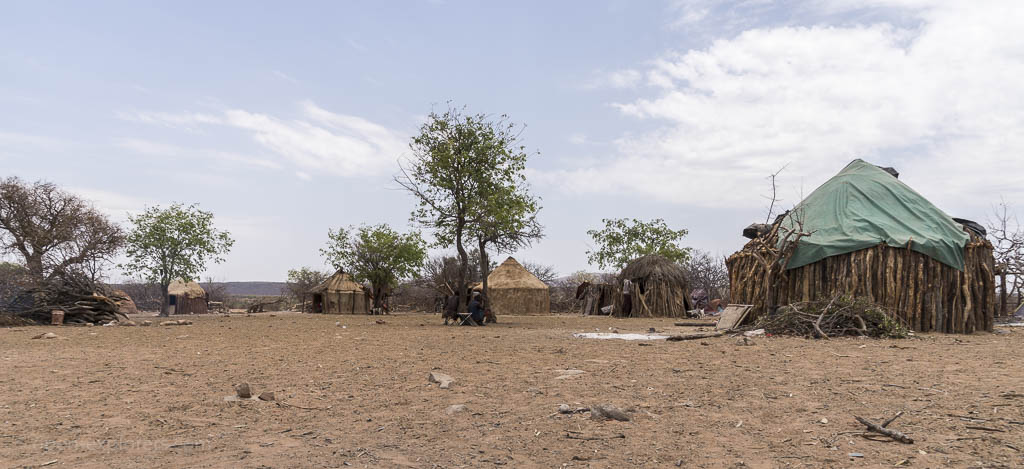
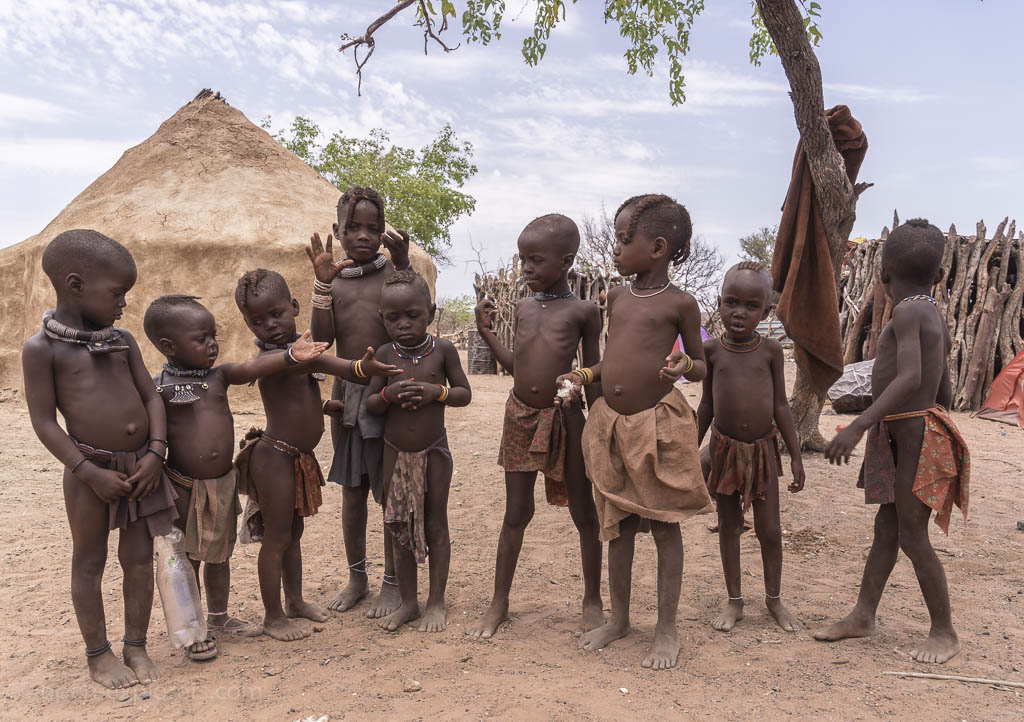
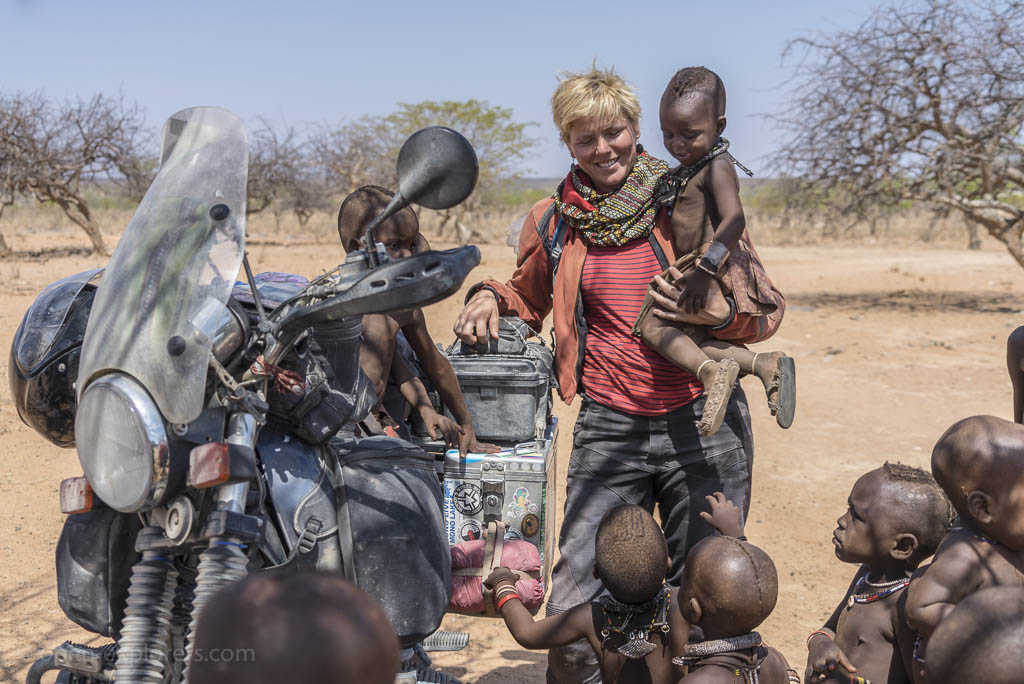
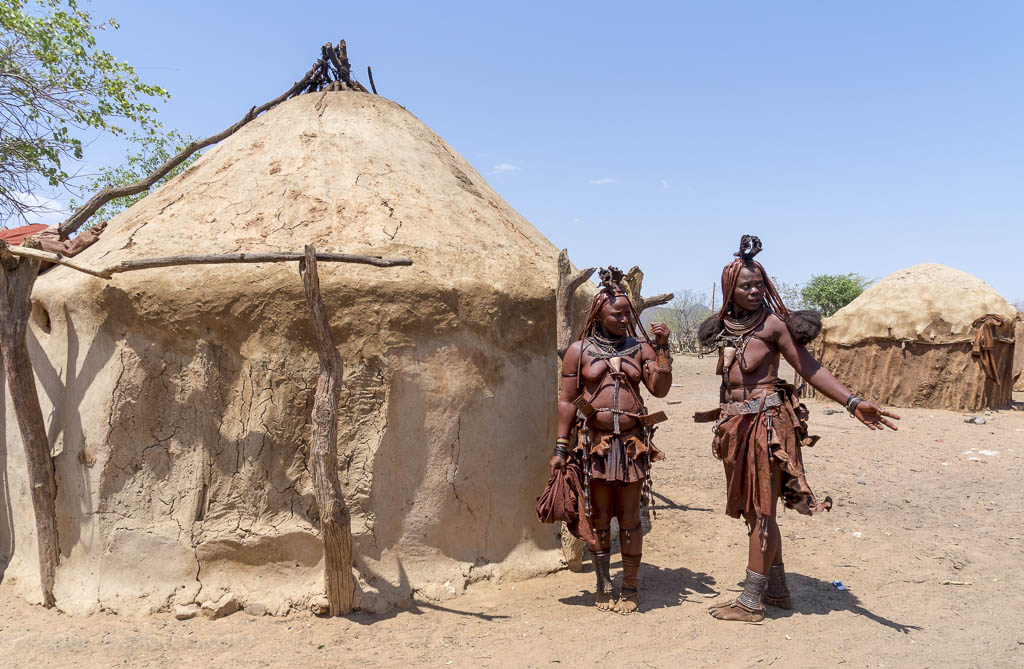
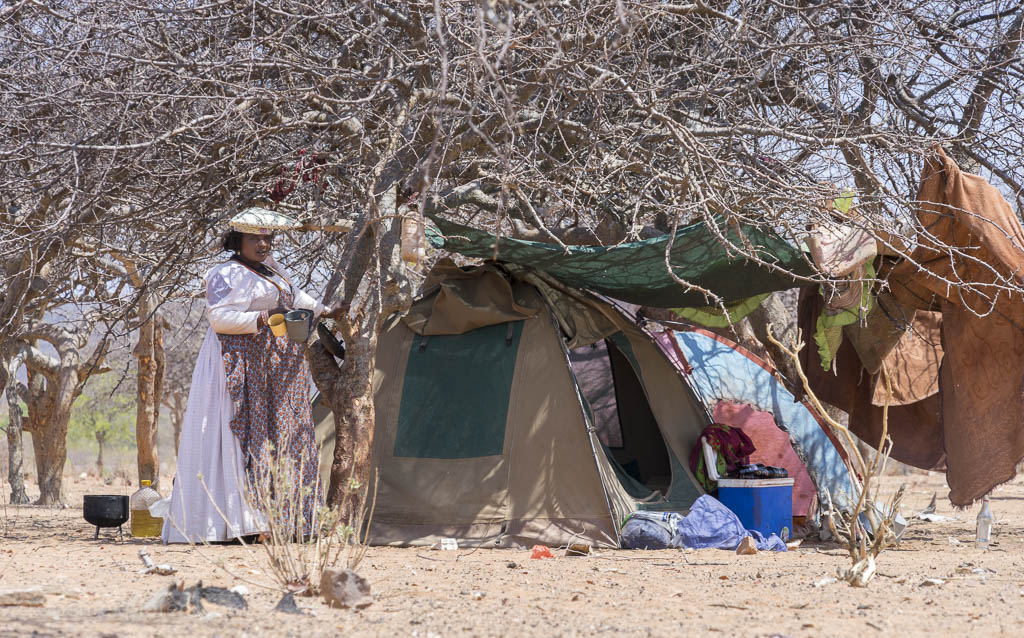
A part of the visitors that had come to the funeral belong to the Herero, another ethnic group of Namibia that is closely related to the Himba. However, their traditional costume is quite a contrast and seems to be less adapted to the local climate. The wide skirts and head pieces were adopted from the Germans during the times of german colonial rule.
Einige der Gäste der Beerdigung gehörten zu den Herero, einer anderen ethnischen Gruppe Namibias die eng mit den Himba verwand ist. Ihre traditionelle Bekleidung ist allerdings ein krasser Kontrast und scheint nicht ganz so ans Klima angepaßt wie die der Himba. Die weiten Röcke und Kopftücher haben sie sich während der Kolonialzeit von den Deutschen angenommen.
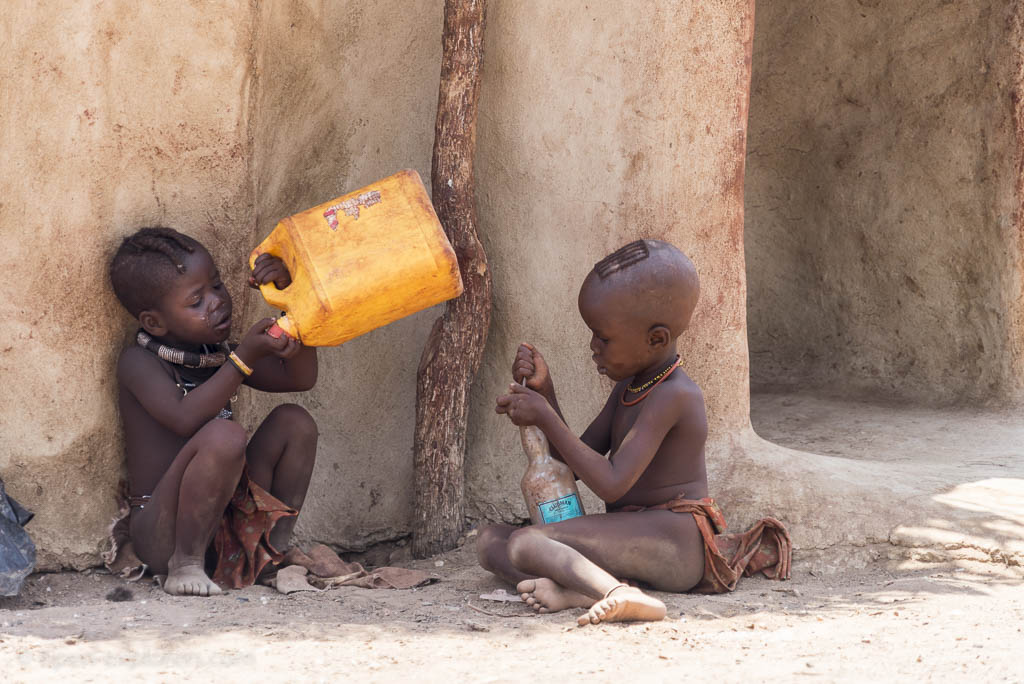
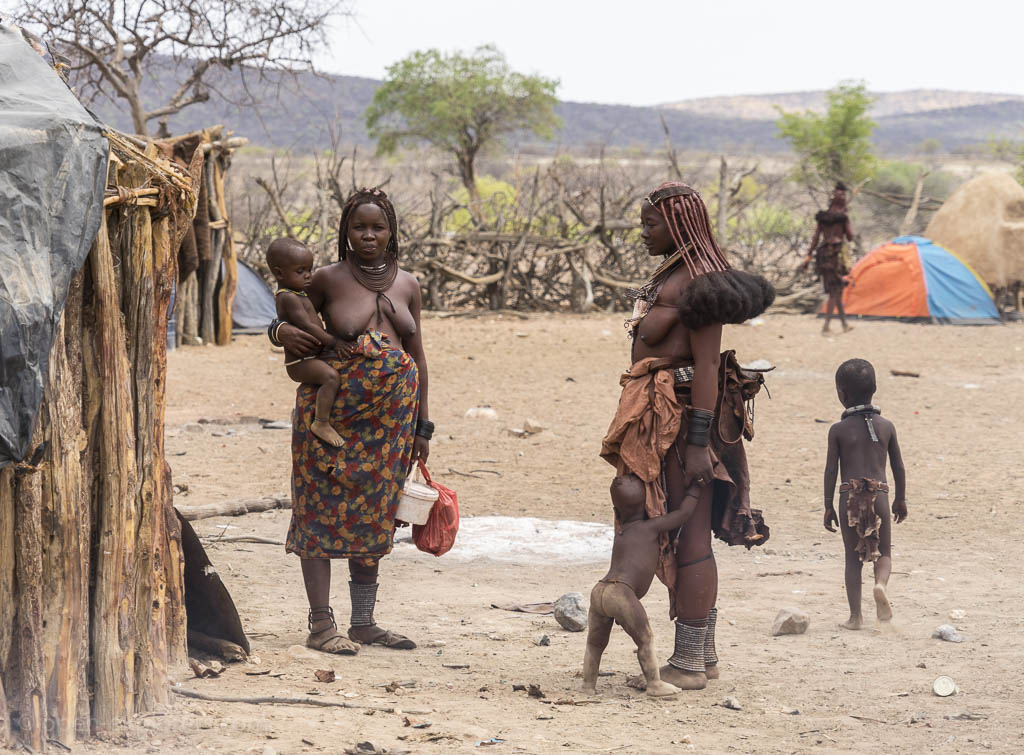
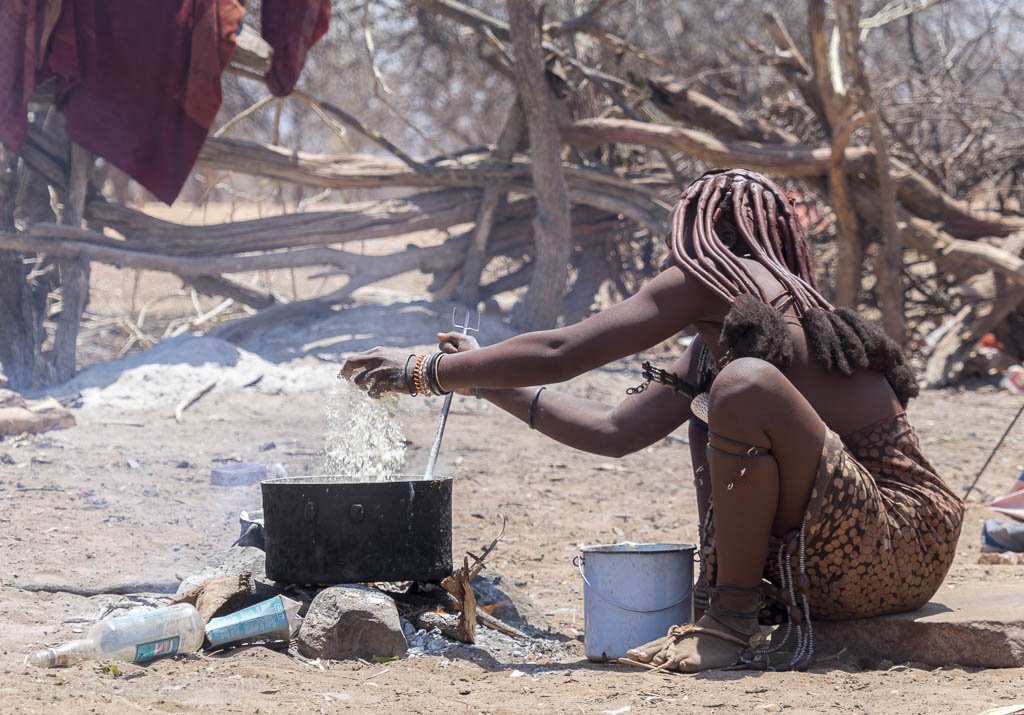
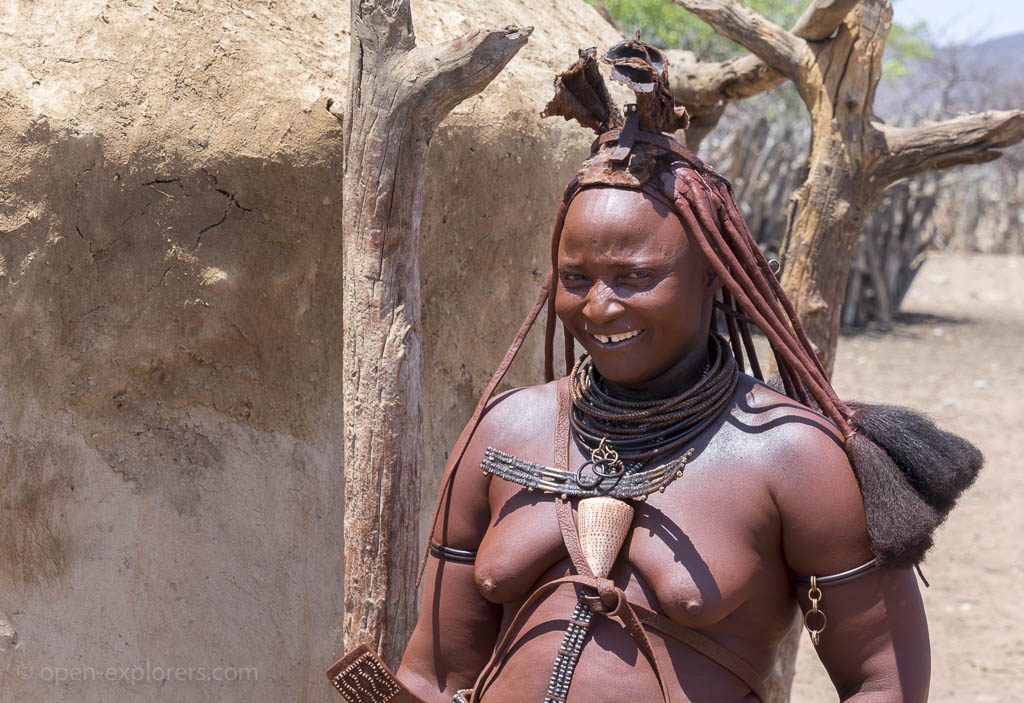
The red skin tone of the people stems from a mixture of butterfat and ochre pigment that is applied regularly. It helps to keep away moskitos, protects against the sun and also used for cleaning purposes. We were told that due to the extrem scarcity of water the Himba people shower only once a year.
Die rote Hautfarbe der Himba kommt von einer Mischung aus Butterfett und Ockerfarbe die regelmäßig auf die Haut aufgetragen wird um Moskitos fernzuhalten und vor der Sonne zu schützen. Sie dient ebenfalls zur Reinigung. Uns wurde erzählt, dass die Himba auf Grund der großen Wasserknappheit nur ein Mal im Jahr duschen.
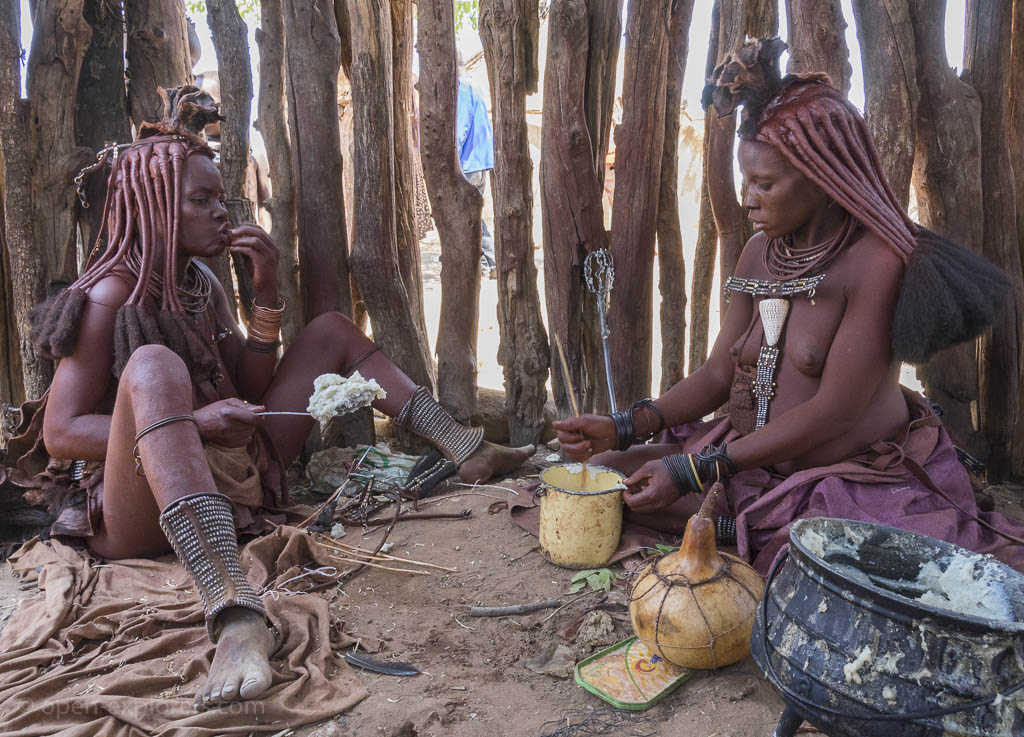
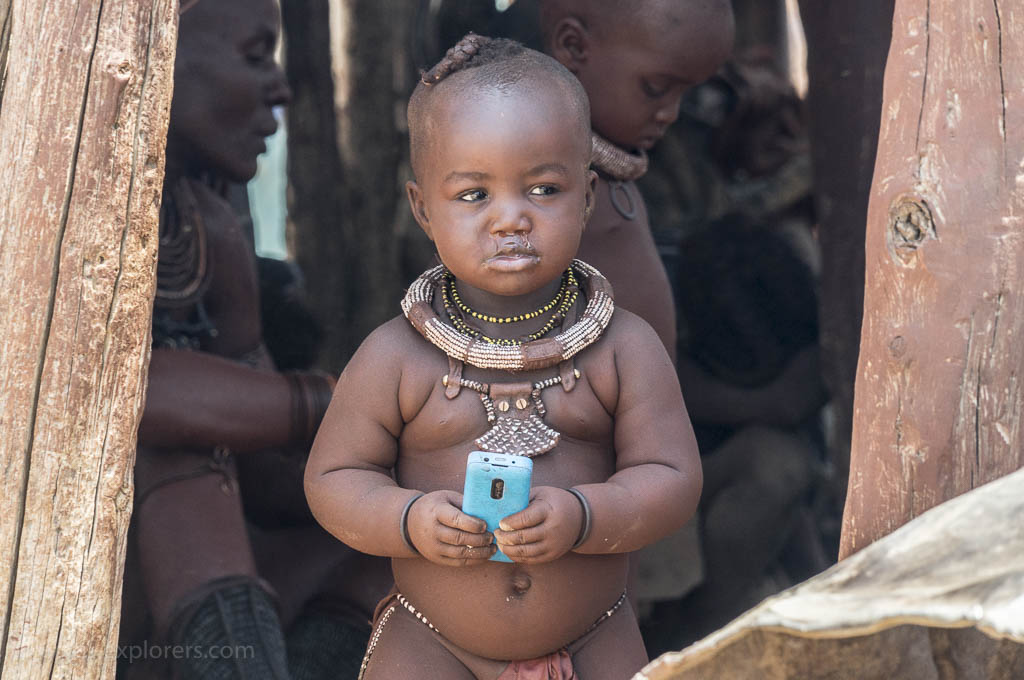
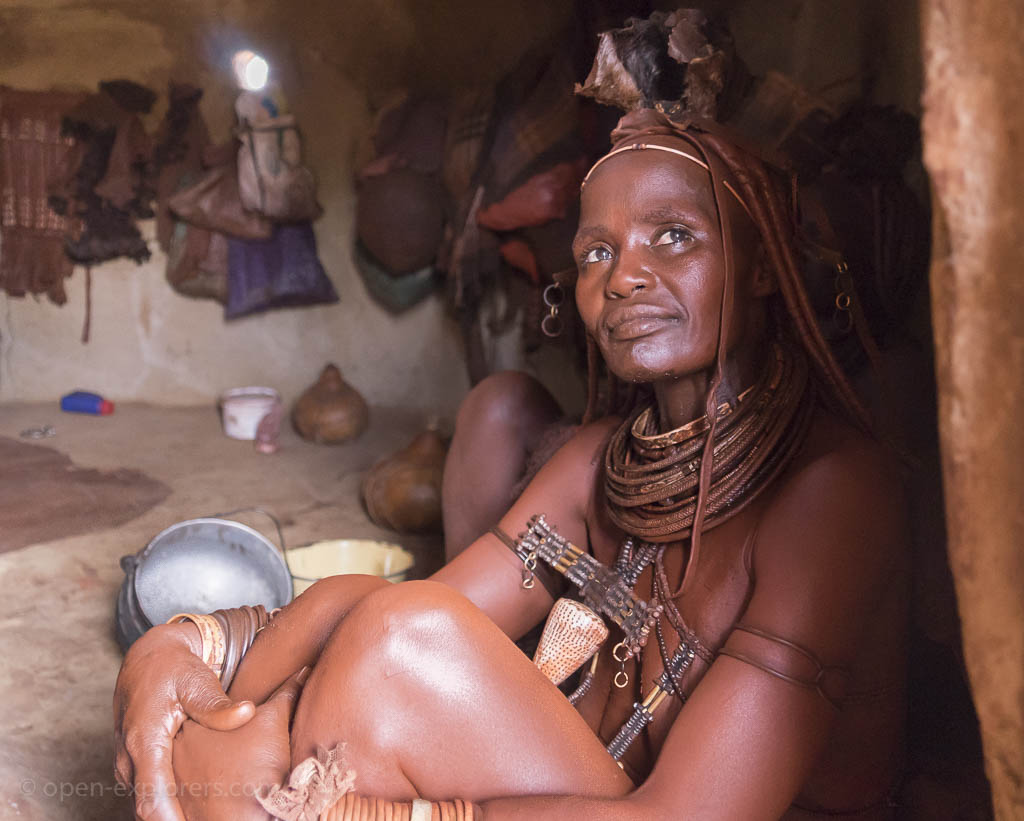
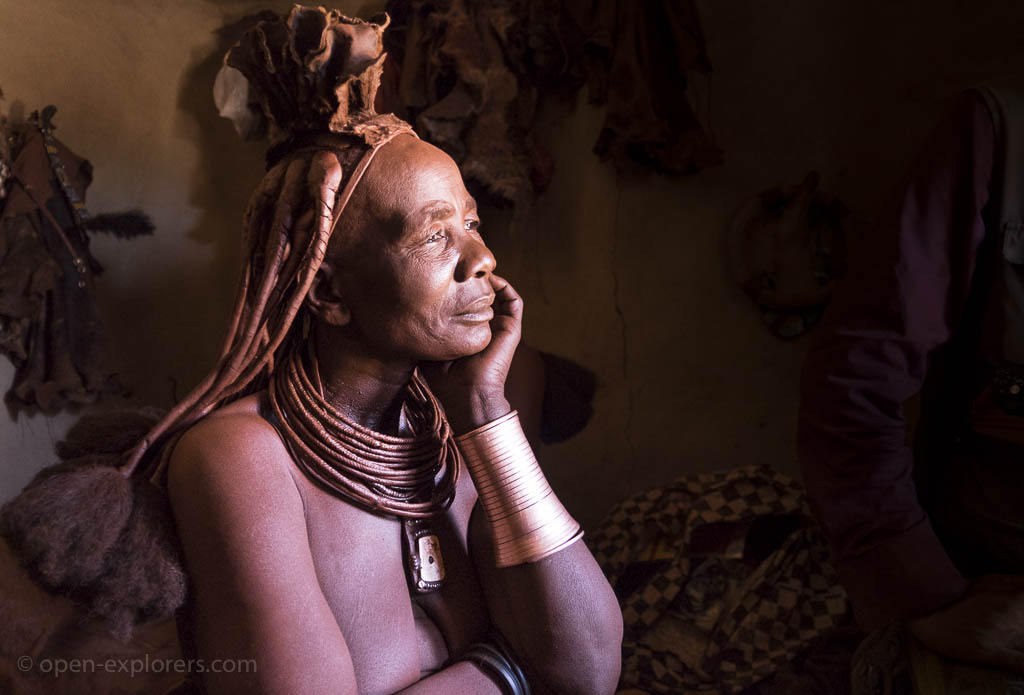
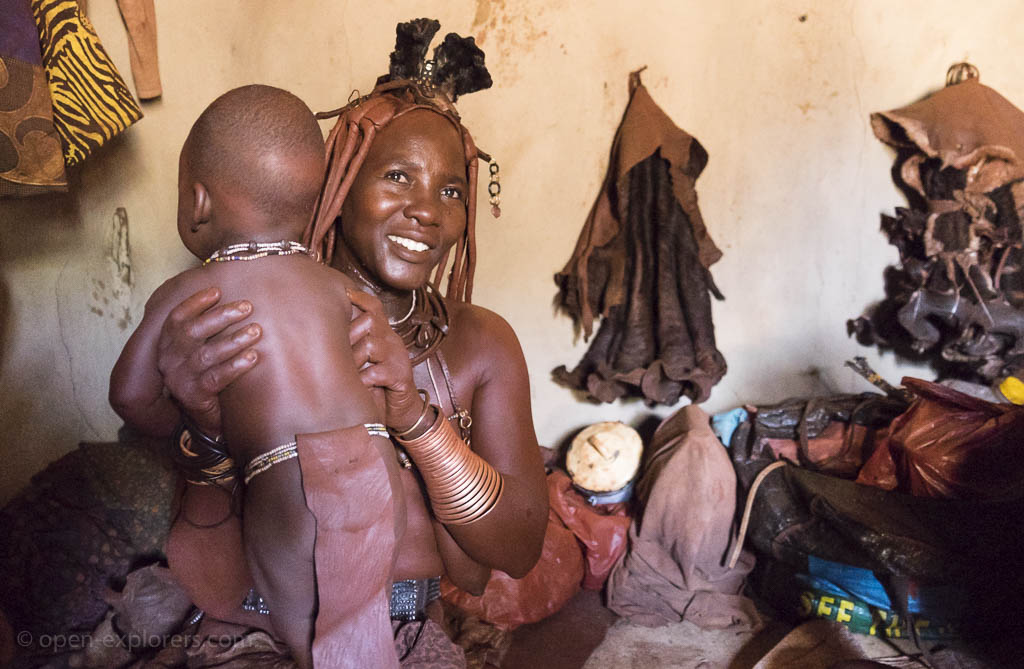
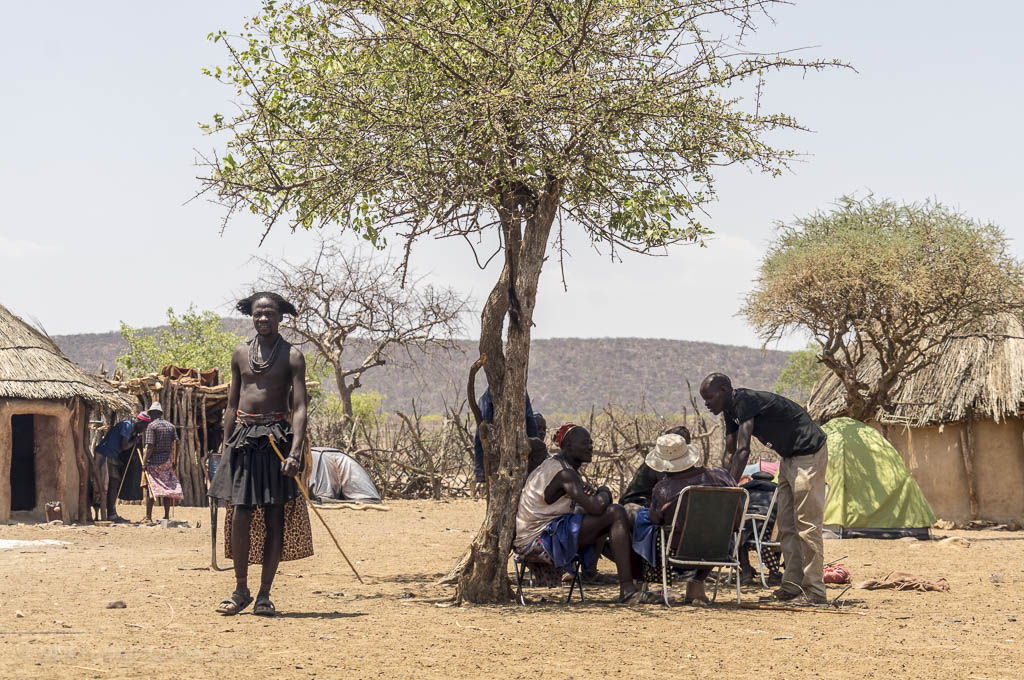
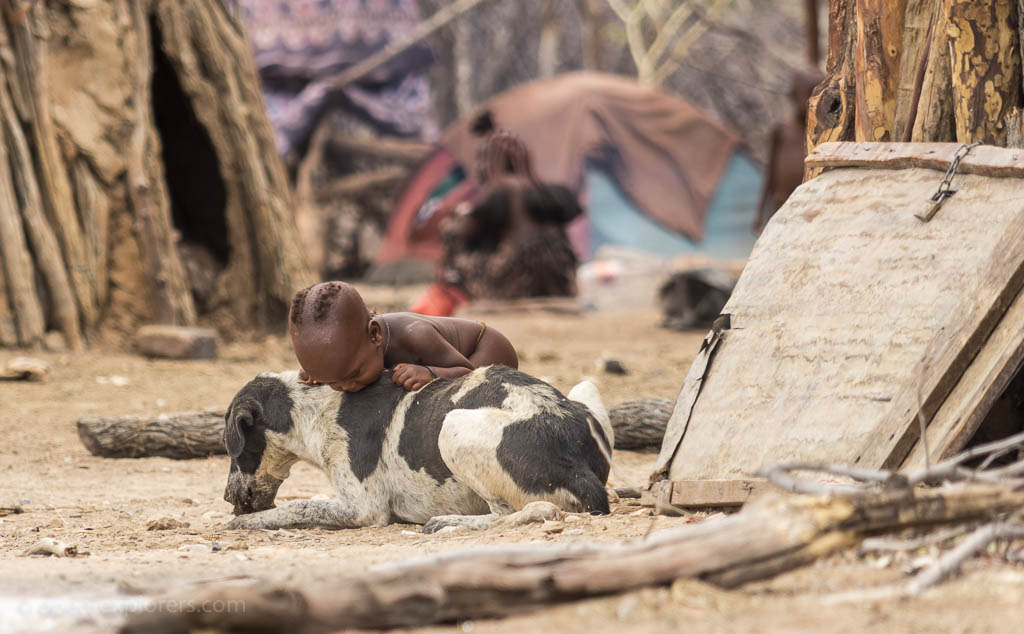
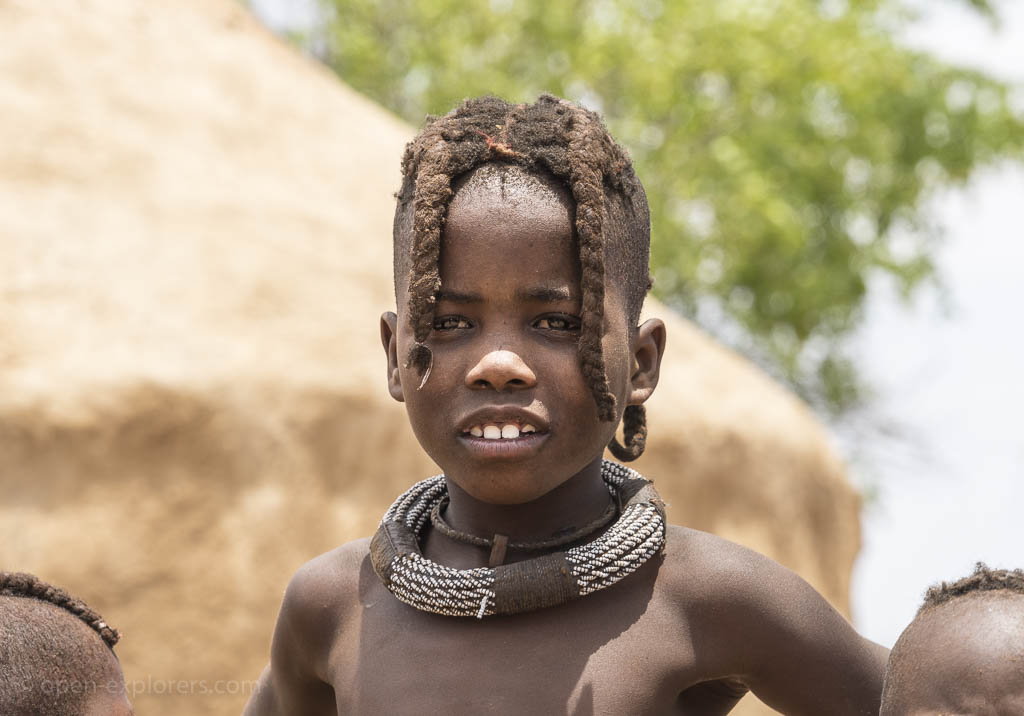
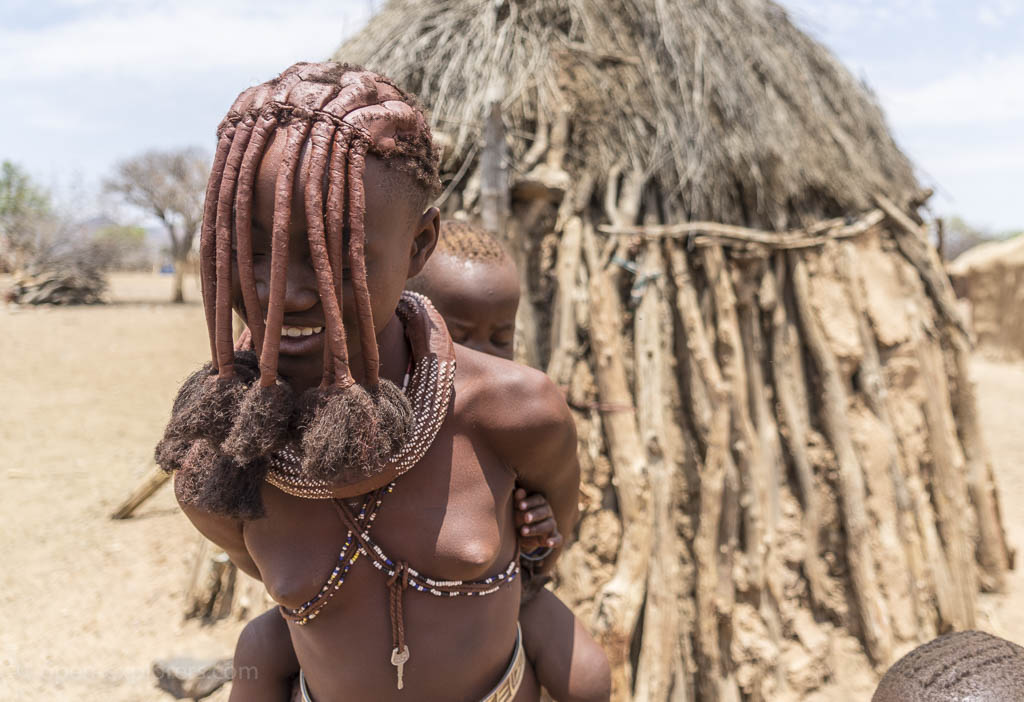
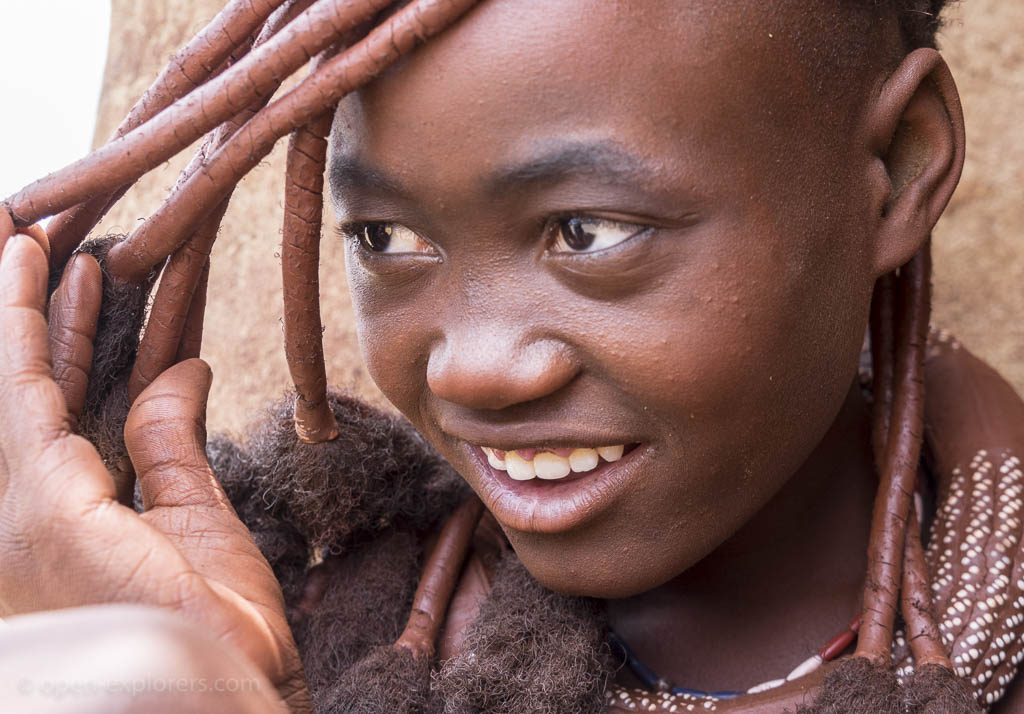
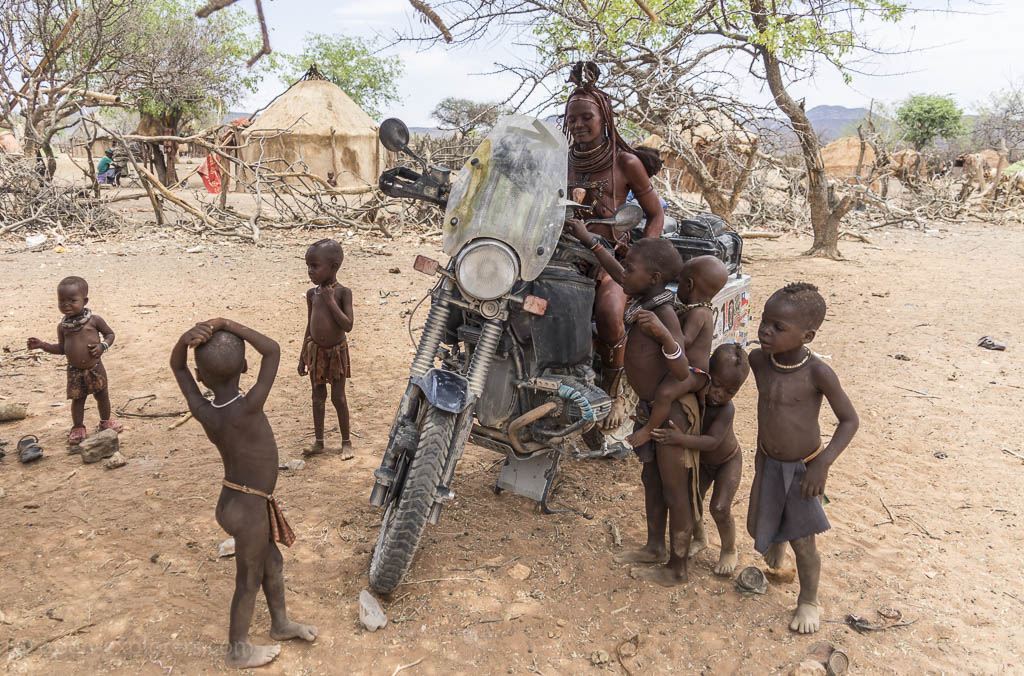
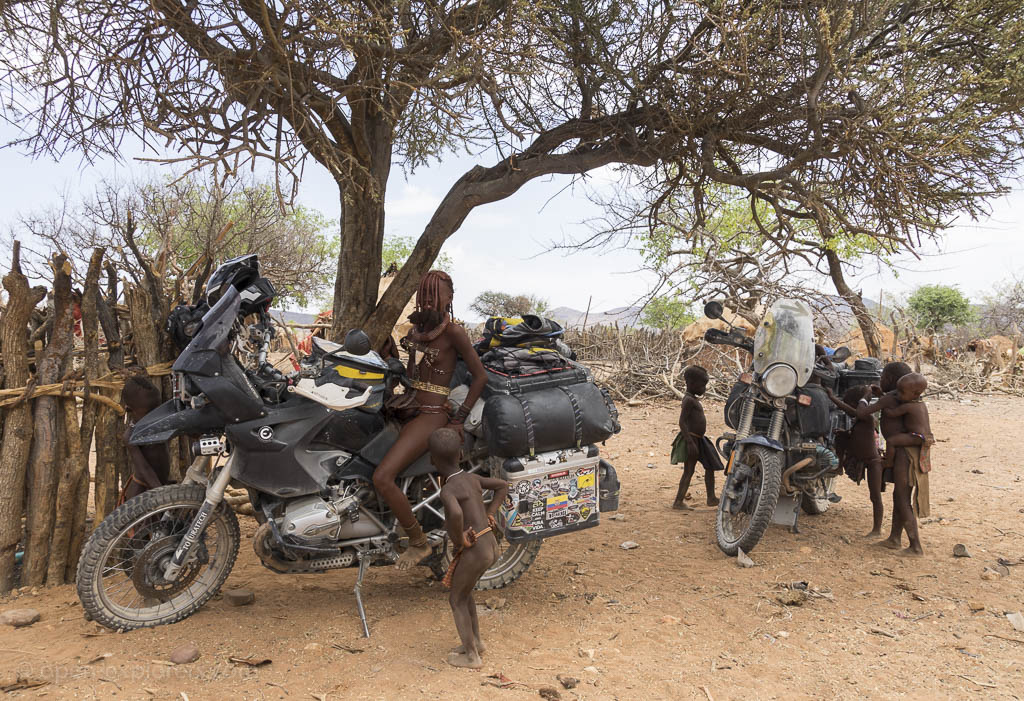
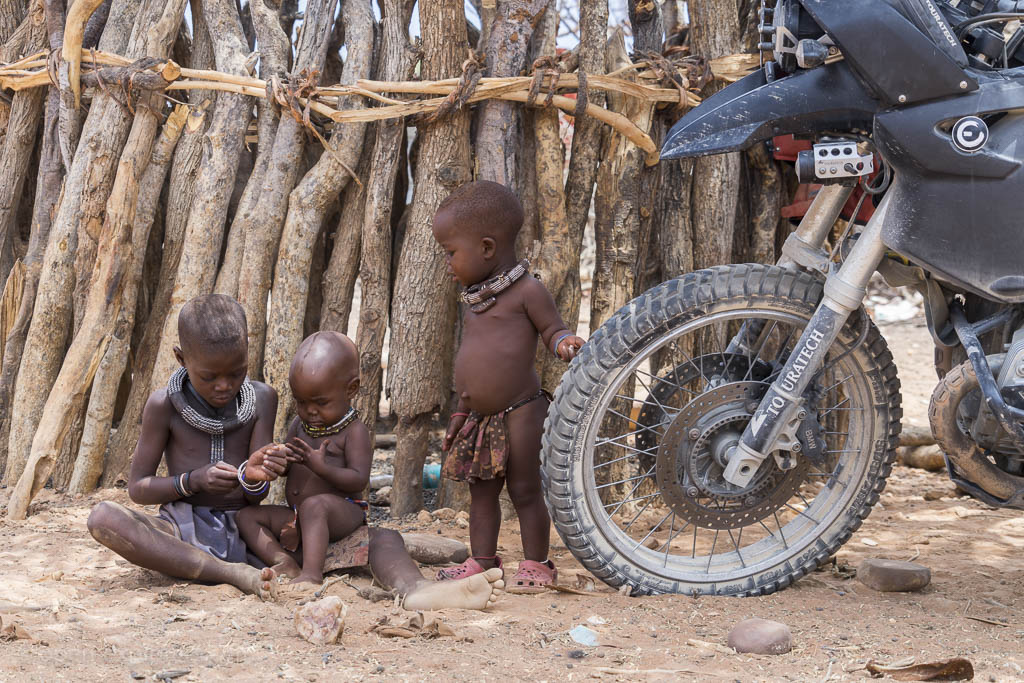
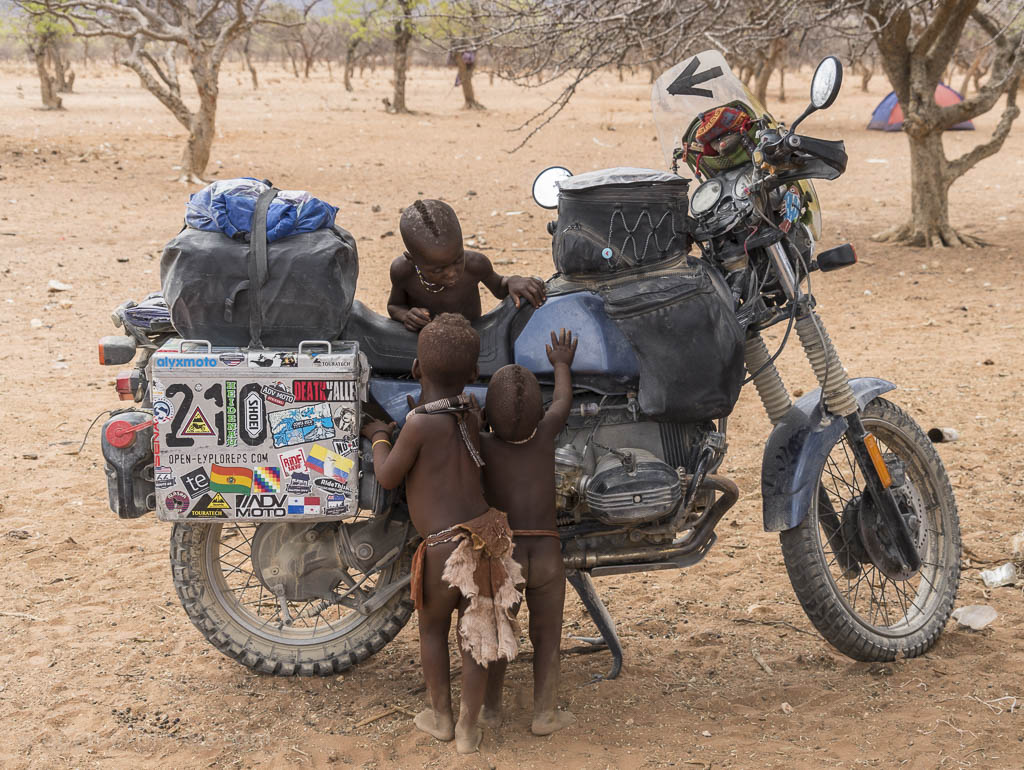
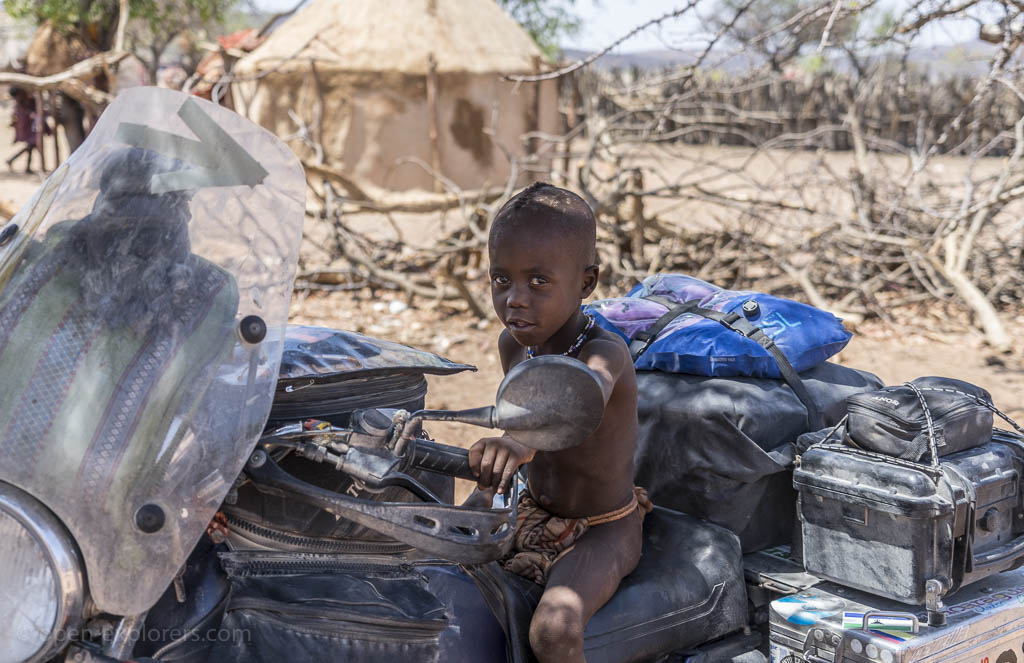
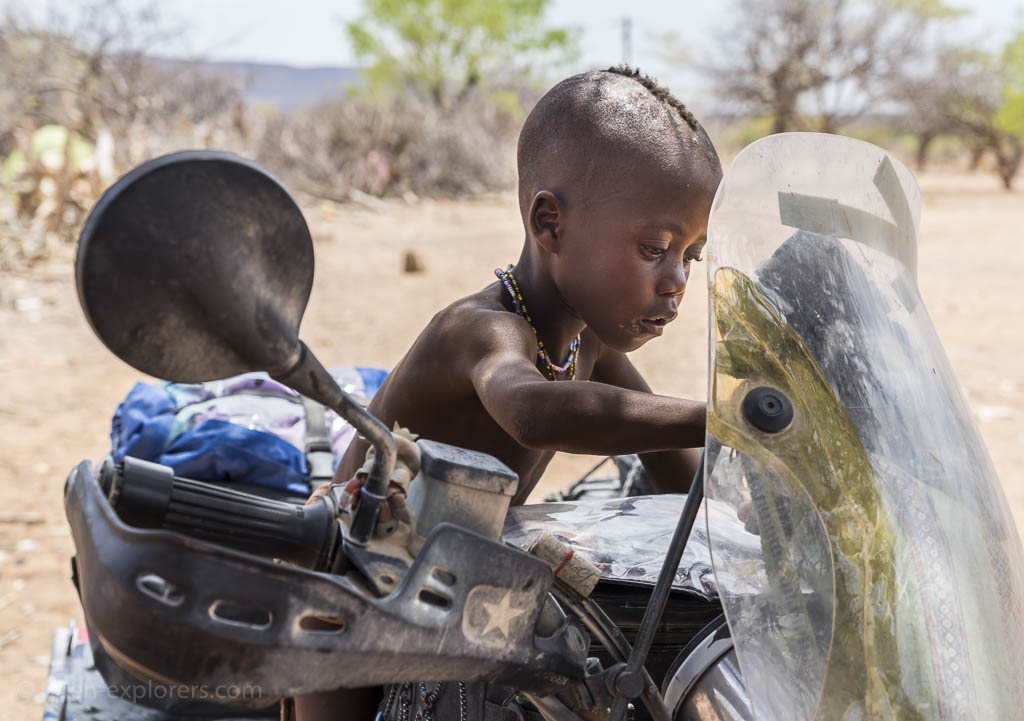
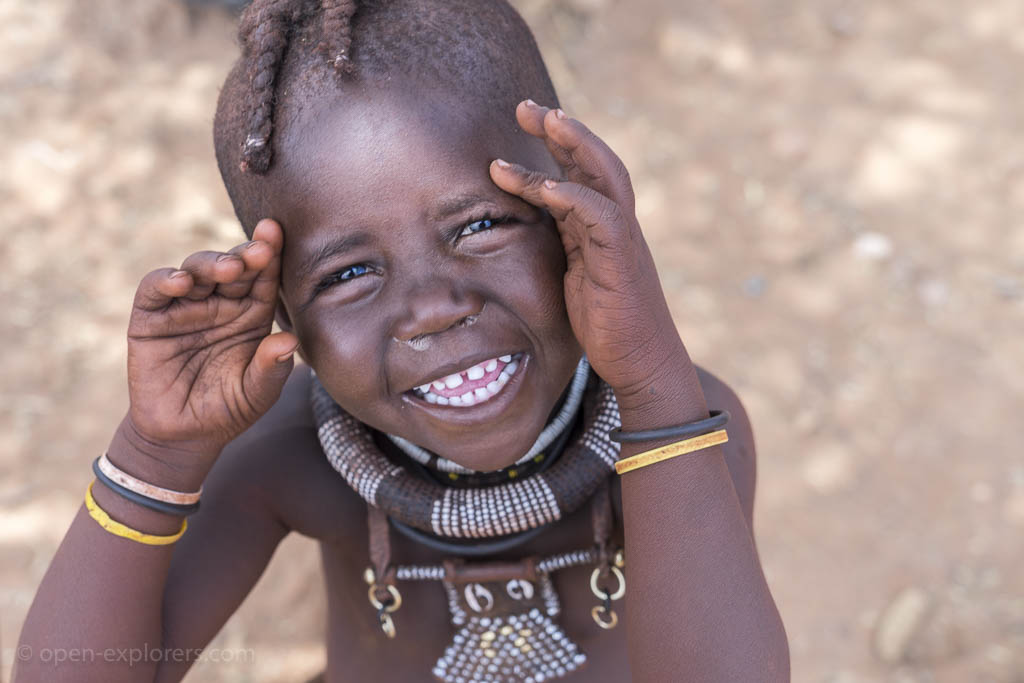
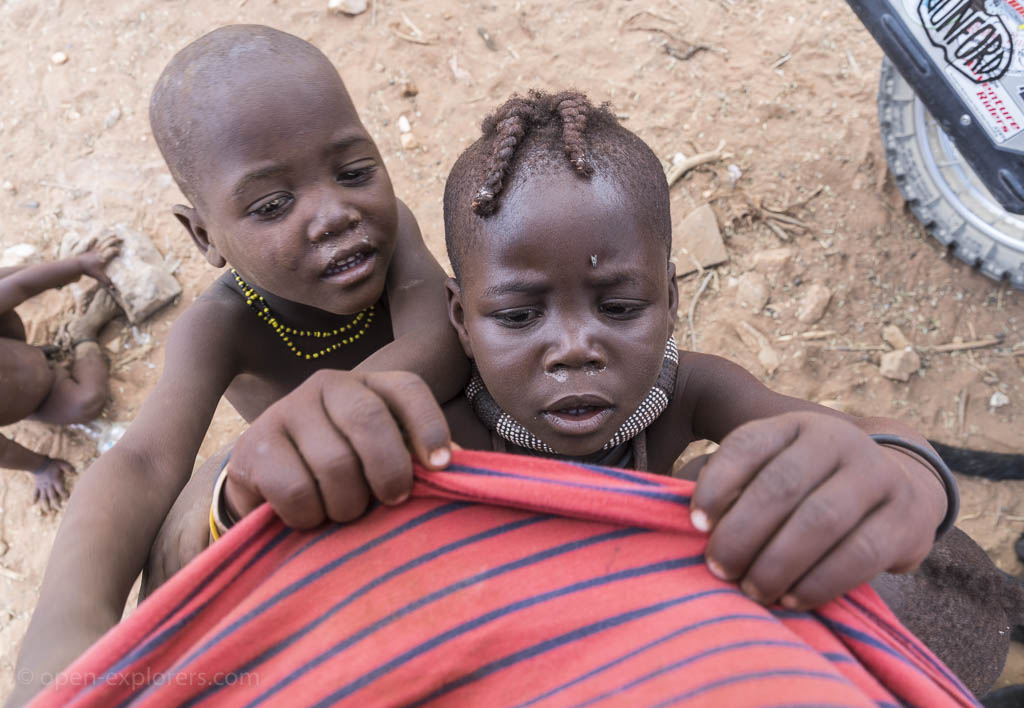

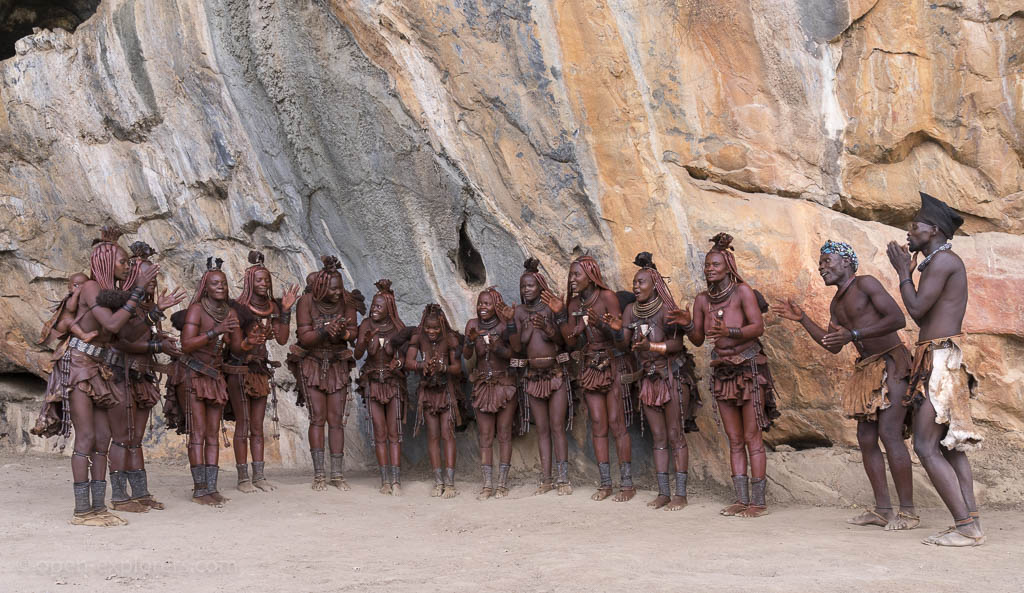
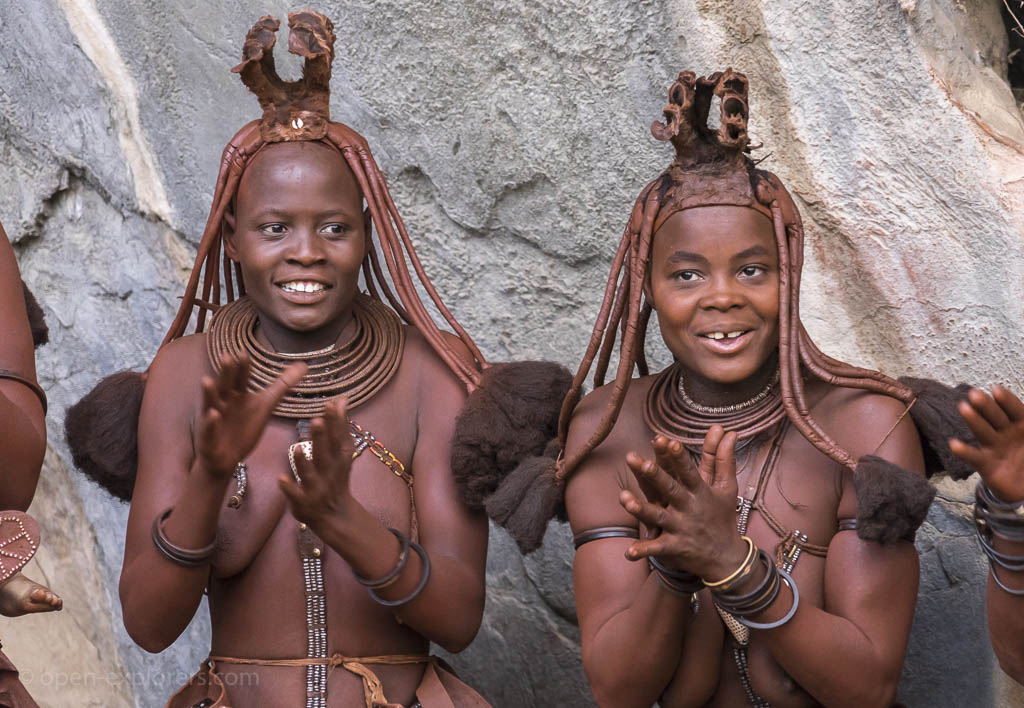
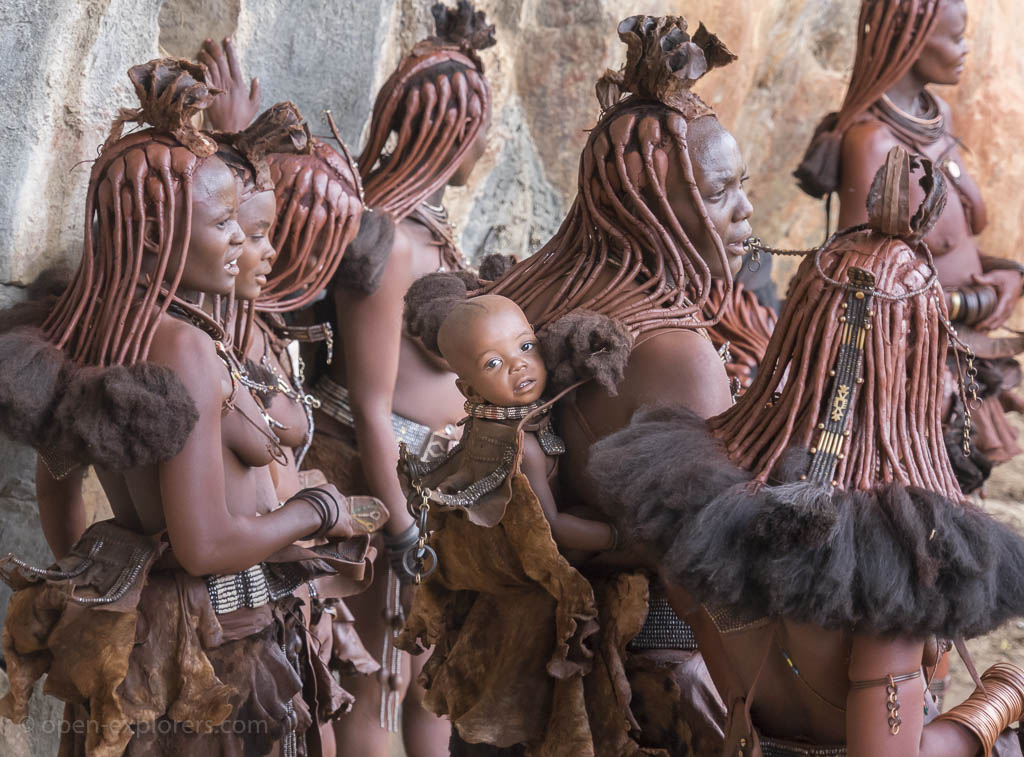
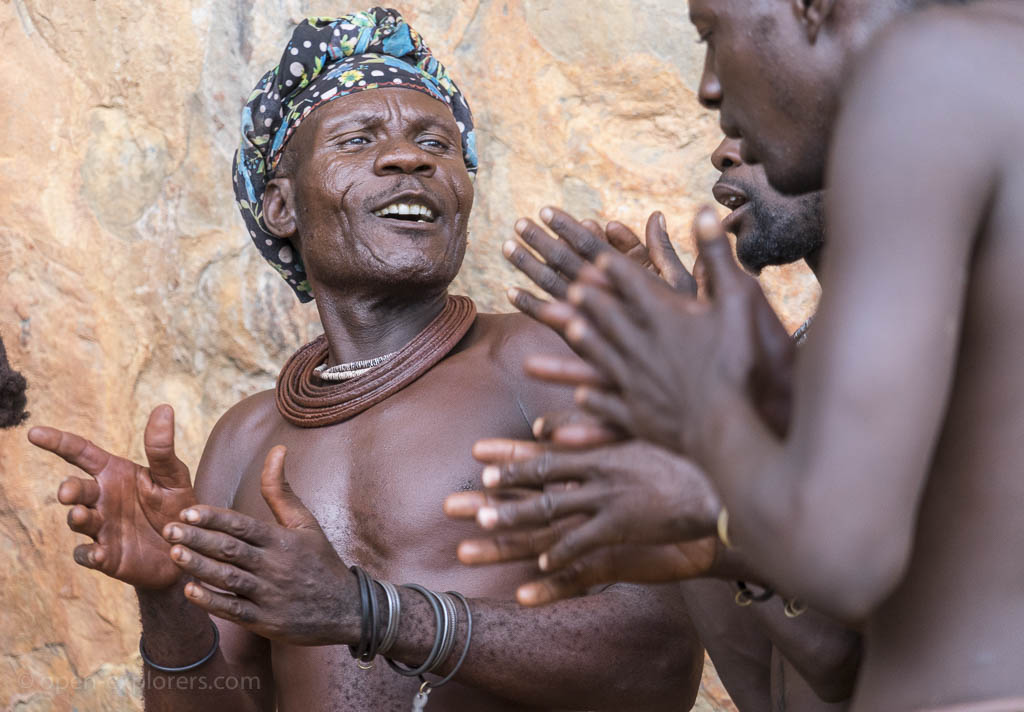
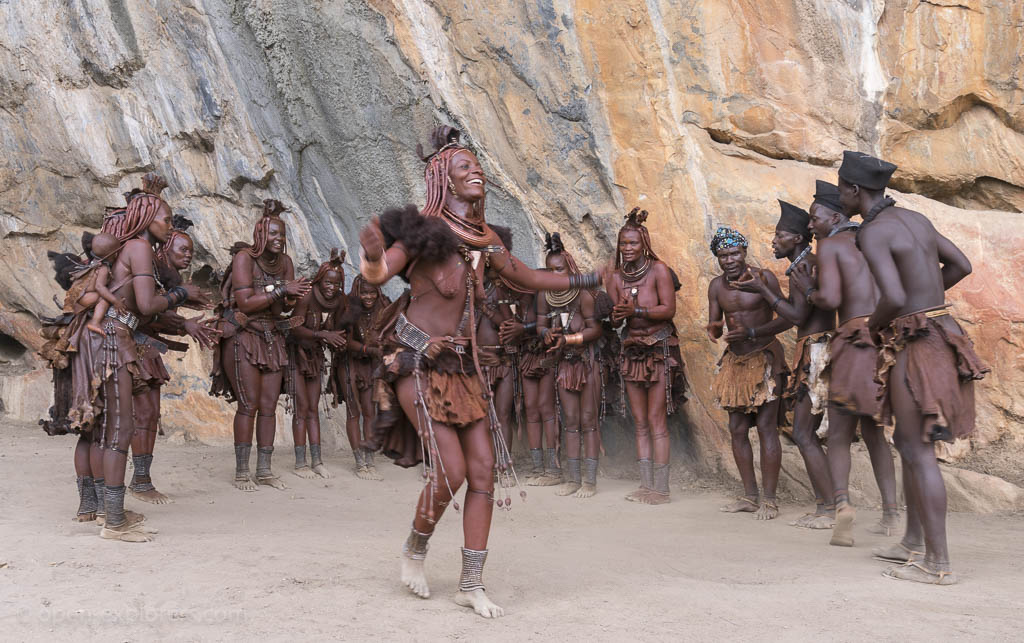
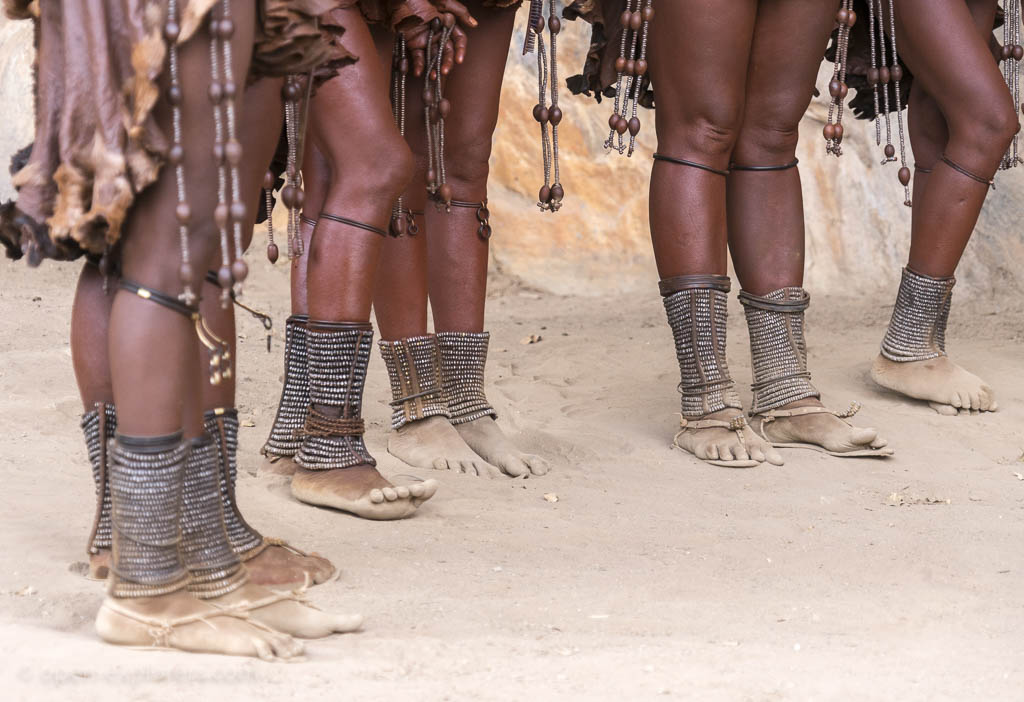
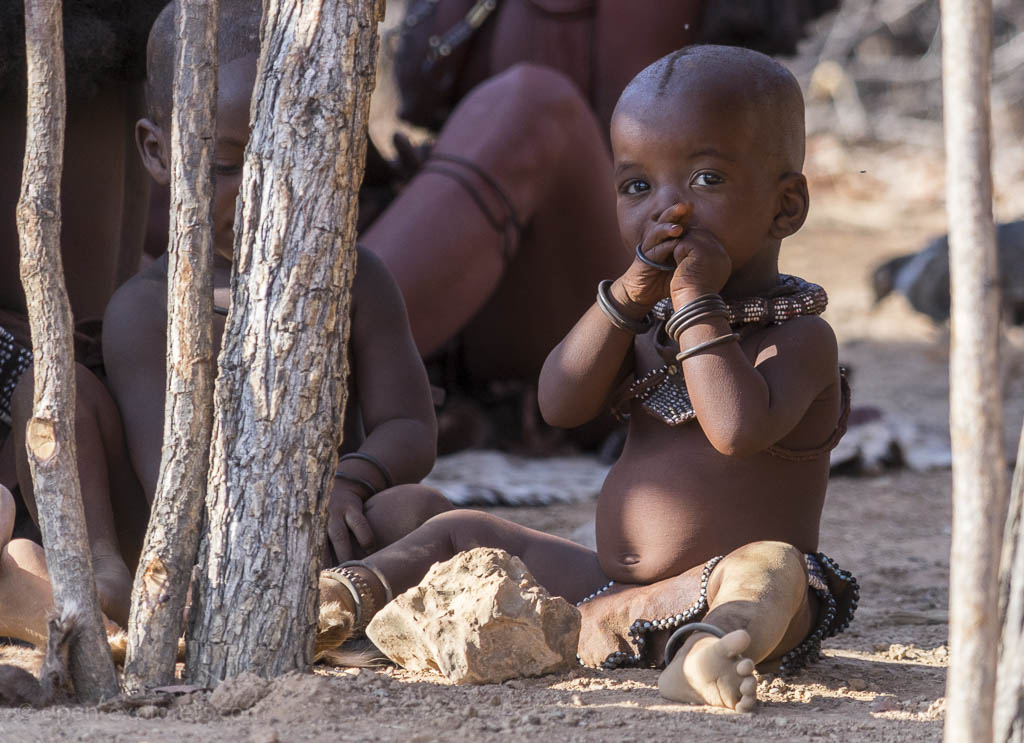
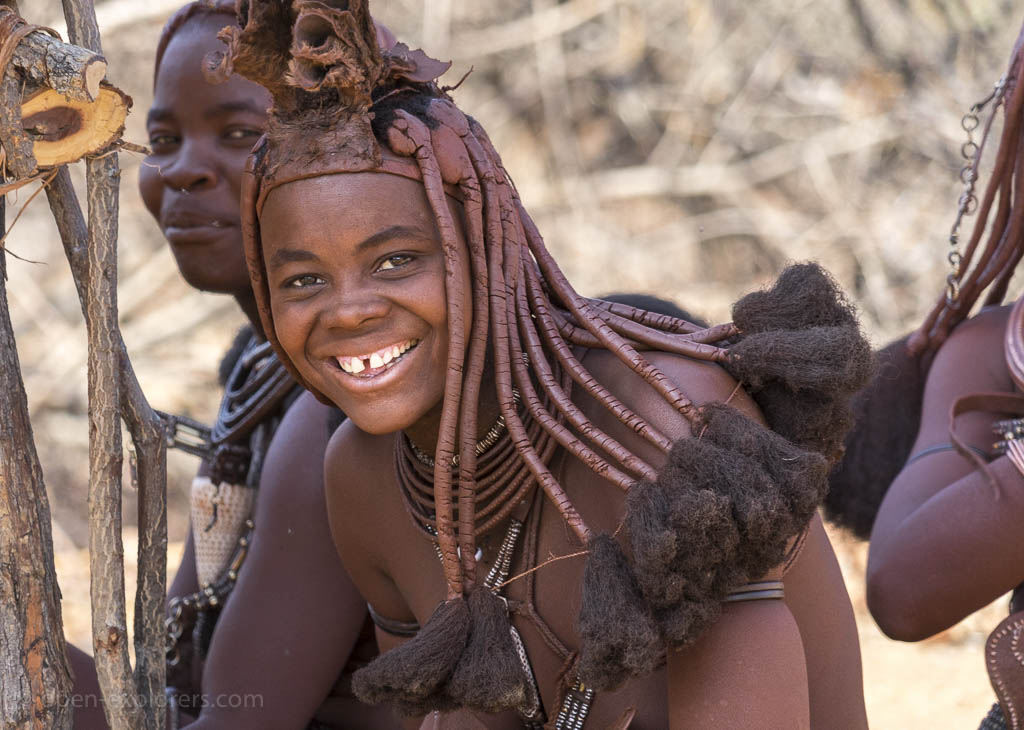
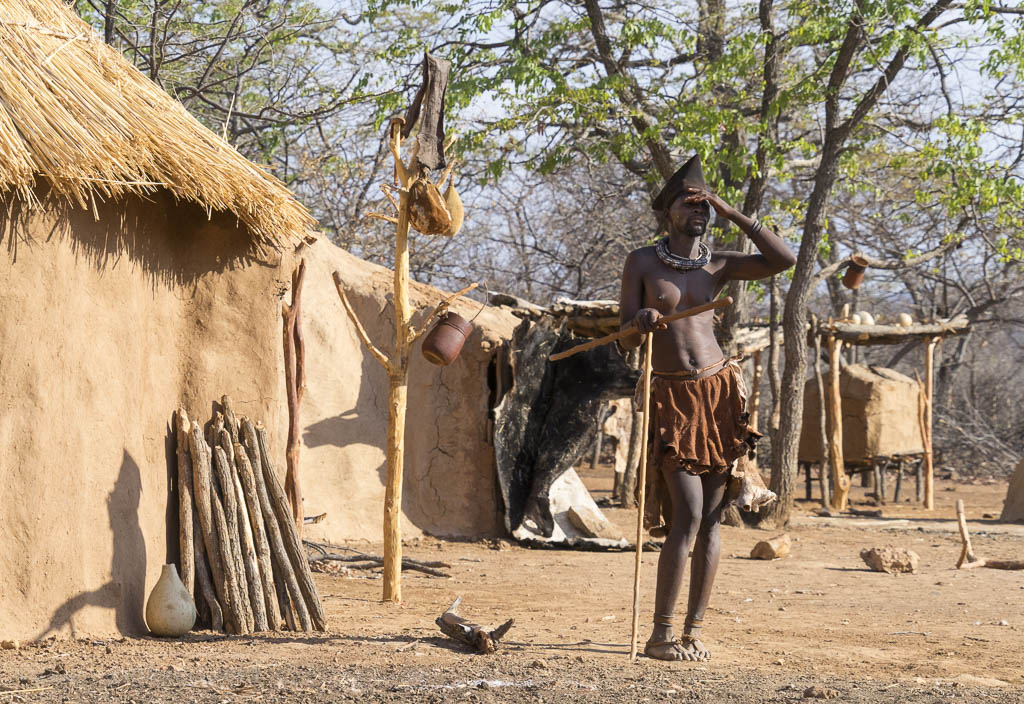
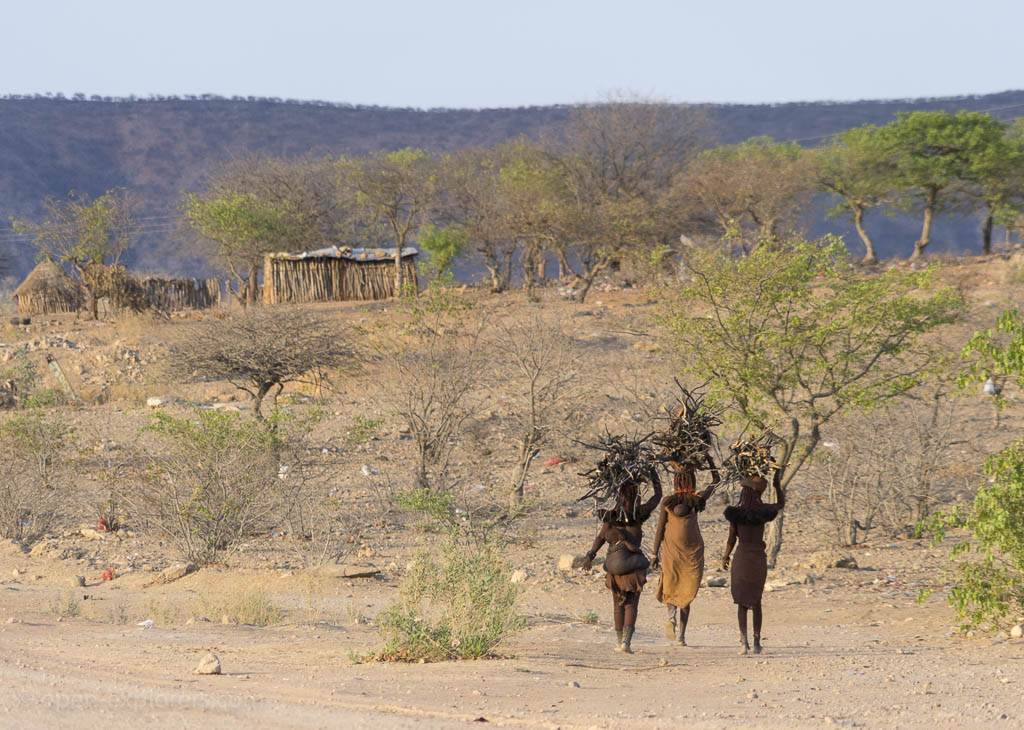
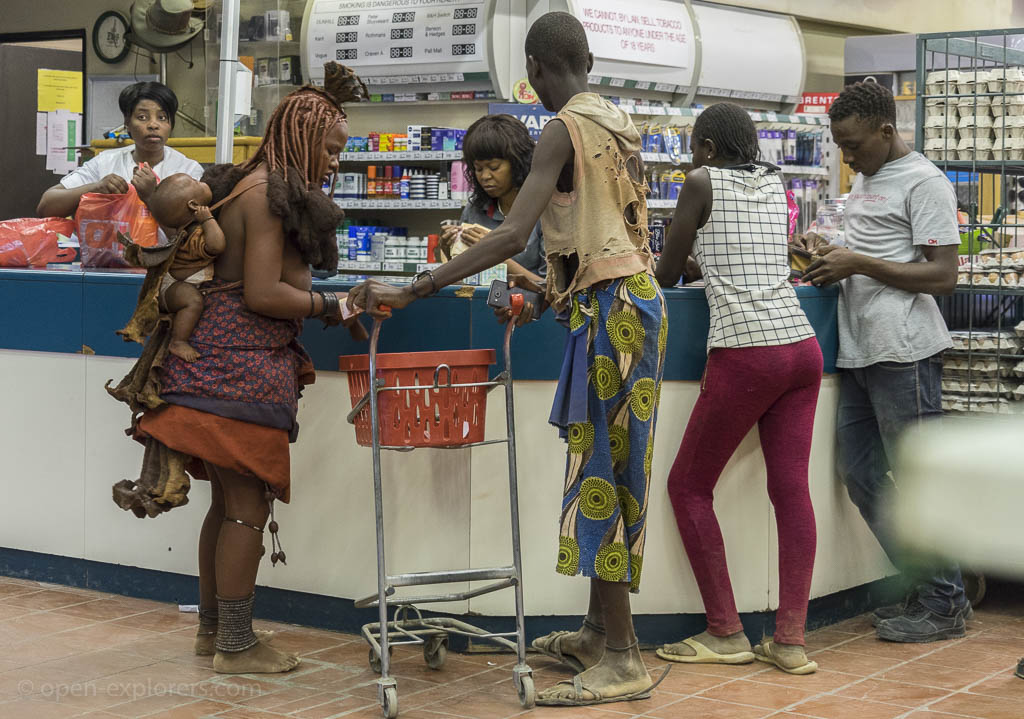
At the supermarket in Opuwo
Im Supermarkt in Opuwo